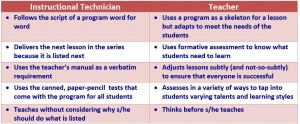Many of us are counting down to the beginning of our first PARCC Assessment or have already begun. I have heard of a lot of colleagues scrambling to find PARCC practice or other test preparation materials. Here is the scoop on test prep: it doesn’t work. With all of the criticisms about the amount of time that schools are spending on standardized testing, it is even sadder that we are piling on top of that with exorbitant time preparing students to take these tests. There may be short-term improvements, but large amounts of time and effort devoted to having students take practice items is a waste of instructional time.
What do we do instead? I propose something novel: teaching students the skills and strategies they will need to be successful thinkers, readers, writers, and mathematicians. This is the goal of PARCC and other tests–to measure how well students think and can do. If we create successful thinkers, they will be able to read and write and problem solve whatever PARCC throws at them.
Here are some things you can do with your students to prepare for PARCC without test prep:
- Read complex text independently
- Orally paraphrasing texts, questions, or writing prompts
- Answer text-dependent questions
- Close reading
- Quote and paraphrases evidence from text
- Read multiple texts
- Write from sources
- Produce extended writing and on-demand writing (2 pages in a single sitting in grade 5 and 1 page grade 4)
- Write an essay
- Edit for conventions: capitalization, punctuation, and spelling
- Keyboard quickly and accurately
- Use online tools to Drag & Drop,
- Read on a Screen/ Electronic Device
- Use note-taking
- Scroll multiple windows
- Navigate multiple screens
- Use online writing tools (spell check, etc.)
- Use online math tools (calculator, ruler, etc.)
- Consume media (viewing video clips, websites, listening to podcasts, etc.)
Download the PARCC Learning Activities handout here.

